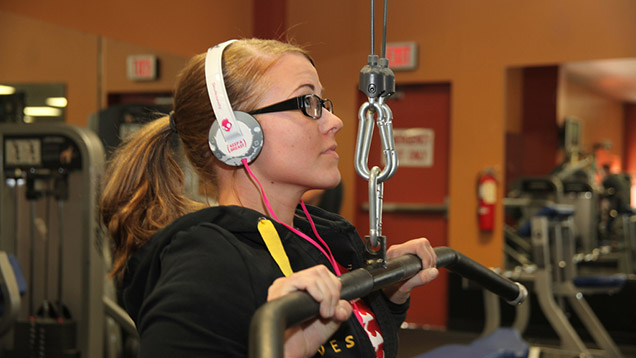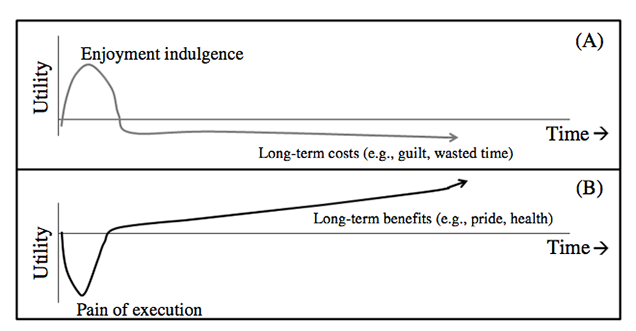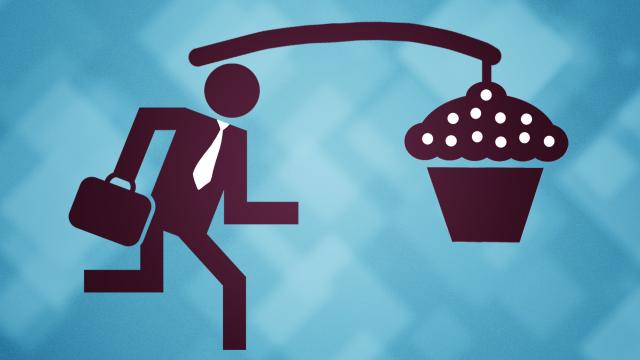Building habits is like training a dog — you want to reward yourself for a job well done. But there’s nothing that says you have to enjoy that reward after your “good behaviour”. Another technique, called “Temptation bundling”, lets you enjoy your reward while you build that habit, and it can be a very powerful tool.
Pictures: kristinausk, CherryPoint, ryan harvey.
What Is Temptation Bundling?

Temptation bundling happens when you pair an instantly gratifying guilty pleasure with an activity you know you should do more of (that otherwise requires willpower). Wharton professor and researcher Katherine Milkman was struck with this idea in her own life:
So a few years ago, when she was having trouble making it to the gym on a regular basis, she decided to allow herself to enjoy these less-than-scholarly audiobooks [The Hunger Games] only when she was exercising. The result: Milkman began hitting the gym five days a week.
Milkman later conducted research and trials, and detailed this process in a paper published in Management Science (looking specifically at temptation bundling to increase physical exercise). But you can use temptation bundling in many other realms of your life as well.

The graph above, from Management Science, compares “should” activities and temptations. Notice how temptations are practically the inverse of “should” activities in terms of usefulness — they’re practically the perfect complements to each other! This is what makes temptation bundling so useful. You can get the benefits of both, without the downsides of either.
Figure Out Your “Should” Activities and Your Temptations
Think about how you might use this in your own life. Are there any activities you avoid, but you know will benefit you in the long run? Let’s call these “should” activities. “Should” activities could include tasks like exercise, studying more, spending time with a family member you’re not fond of, or any other type of positive change you want to achieve. They can be different for everyone.
Once you have a list of “should” activities, determine your list of temptations — the guilty pleasures you like to enjoy from time to time, but aren’t particularly useful in your life. Remember, these aren’t rewards you enjoy after you perform a “should” activity, but things that will stimulate you while you perform it. So, they could include listening to a certain audiobook or podcast, a trashy TV show you secretly enjoy, a drink you really like (I love yerba mate tea), or some other reward to stimulate the senses.
Bundle Your Temptations
Once you’ve got the two lists together, it’s time to pair your temptations with your “should” activities. Milkman suggests a few examples, including getting pedicures while catching up on overdue work emails, listening to your favourite music when doing household chores, or going to your favourite restaurant only when spending time with a difficult relative.
Make sure that your temptation doesn’t impair performance of the “should” activity. For example, some people listen to music while they study, but I absolutely can not. The music distracts me to the point where I can’t focus.
Temptation bundling becomes less effective if you enjoy your temptations outside of your “should” activities. It’s tough, but if you’re going to bundle a trashy TV show with the gym, try not to watch that show any other time.
Transition Away from Your Temptations When You Don’t Need Them

As your “should” activity becomes intrinsically more rewarding, you can rely less on temptations. Start the transition away from temptations by only using them when you feel like quitting a “should” activity. Health writer Brad Stulberg offers an example in Men’s Fitness:
During these [stationary bike] rides, I’ll catch up on reading about the latest health research for the first two hours, at which point everything (and I mean everything) starts to get uncomfortable. When that happens, out go the medical journals and in come T.I. and 50 Cent.
You could flip Stulberg’s formula and use a temptation to trick yourself into starting on a daunting “should” activity, too. For example, watch just one episode of a TV show as you get started on the elliptical, then turn it off.
Some temptations might come with long-term costs. They were useful in getting you started with the “should” activities, but might not be sustainable (for example, if they’re junk food-related). Some of these costs are mainly opportunity cost (e.g. you could have been learning instead of watching a TV show).
Over time, you can return to the normal model of habits if you don’t need the extra motivation that a bundled temptation provides (here’s how you can pick relevant rewards). Start measuring your progress to make the “should” activity intrinsically more rewarding.
Temptation bundling may sound simple, but it can be a powerful tool to drive change. You might already be doing without knowing it. Now, you can consciously start bundling more temptations together with other “should” activities, so it becomes easier to change and improve yourself.

Comments